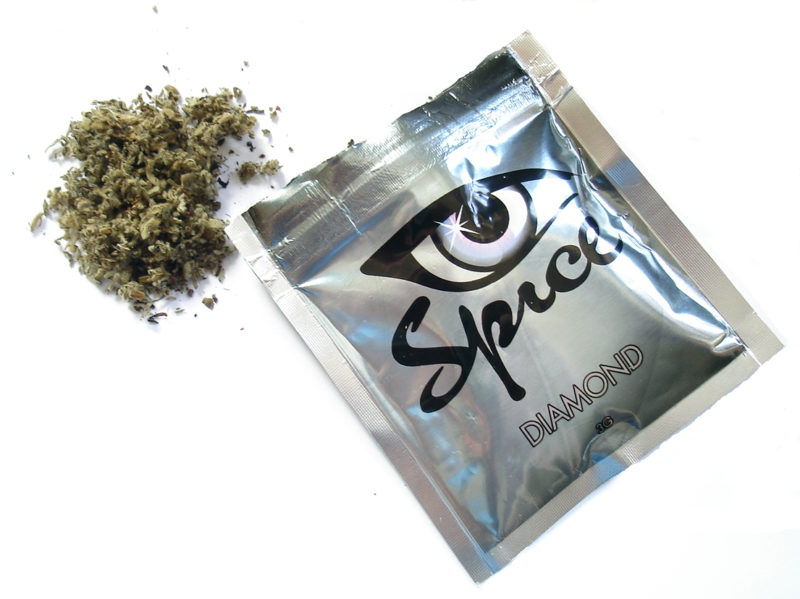In New York, it is a crime to operate a motor vehicle while one’s ability is impaired by alcohol or drugs. Most people understand this, but what few people understand is that the term “drug” has recently sparked controversy over a potential loophole in New York’s DWI law. The term “drug” in New York’s DWI statutes references a list of specific substances according to their chemical make-up. If a driver is found to have smoked, snorted, or otherwise ingested any substance on New York’s list then they can be charged with a crime if their ability to operate a vehicle was impaired as a result. However, in recent years many new “designer” drugs have hit the streets, with chemical compounds that are not on the New York Schedule of Controlled Substances (the fancy name for New York’s drug list). One recent example of a “designer” drug is K2 or Spice, the street names for synthetic marijuana. If a driver is impaired by a drug not on the Schedule of Controlled Substances, such as synthetic marijuana, then they cannot be charged with a driving while ability impaired by drugs (“DWAI Drugs”) under New York Vehicle and Traffic Law Section 1192(4).
The Loophole Explained
The reason why there is a loophole in the first place is because of the way New York’s statutes are written. Under Vehicle and Traffic Law Section 1192 there is a fundamental difference between what the government needs to prove to charge someone with driving while intoxicated by alcohol versus what the government needs to prove to charge someone with DWAI Drugs.
Under the portion of the law relating to driving while intoxicated by alcohol, there are two ways an individual can be charged. First, an individual can be found to have operated a vehicle with a blood alcohol content that is greater than .08, the alcohol content is measured via a chemical test. Second, an individual can be found to have operated a vehicle in an intoxicated condition. The determination of whether the individual was in an intoxicated condition is made by a police officer. The officer will usually cite things like “the driver exhibited a strong odor of an alcoholic beverage” or “the driver had glassy bloodshot eyes consistent with the use of alcohol” and last but not least “the driver exhibited slurred speech”. All of these subjective observations allow the officer to then put a driver through field sobriety tests. As a result of field sobriety tests and other observations, the officer decides whether or not to charge the driver with DWI. Basically under this method it is the officer’s subjective observations that serve as the basis for the charge.
However, under the portion of the Vehicle and Traffic Law relating to DWAI Drugs, in order for an individual to be charged, the government must establish that the individual is impaired, and then establish by what specific drug the individual is impaired by. New York Vehicle and Traffic Law defines “drug” as any substance listed on the New York Schedule of Controlled Substances (Public Health Law Section 3306). The Schedule of Controlled Substances is roughly 34 pages of specific drugs, listed by their chemical make-up. This includes both illegal drugs such as marijuana, cocaine, heroin, methamphetamine, and prescription drugs such as hydrocodone, xanax, and morphine. Once an officer believes that a driver is impaired by a drug, a urine screen or blood test is done in order to determine which drug is in the driver’s system. The statute was written this way so that there could be some scientific validity behind the imposition of criminal charges.[1]
Thus if a driver is impaired by a drug that is not specifically listed on the Schedule of Controlled Substances they cannot be charged with any crime under Vehicle and Traffic Law Section 1192. As Nassau County District Attorney Madeline Singas put it “If we can’t define the chemical and it’s not on the list, we can’t prosecute you”.
Real Life Examples
Even after reading the paragraphs above it is still hard to believe that there would be a situation where the government would not actually be able to charge an individual just because the drug they took was not on a list, but it is true.
In 2012, in Long Island’s Nassau County, officers stopped an erratic driver who admitted she snorted a bath salt known as “Disco Powder.” Police found traces of the drug in her car, but prosecutors couldn’t charge her with intoxicated driving because the drug, which was made to mimic an outlawed stimulant, was just different enough chemically to escape legal scrutiny.[2]
In June 2014, a woman who crashed into a parked car in Suffolk County was arrested after telling police she had taken anti-depressant and seizure medication before the crash. The officer, who said the woman was stumbling, had slurred speech and failed a field sobriety test, arrested her on a drugged-driving charge. But a judge dismissed the charges against after finding that the prescription pills weren’t on the banned list.[3]
Conclusion
This loophole has not gone unnoticed by those who wish to sell designer drugs. Illicit chemists deliberately manufacture drugs with chemical compounds that are not on the Schedule of Controlled Substances so that users can avoid criminal liability. As a result, legislation is pending in New York to align its law with other states that rely solely on an officer’s observation of a driver’s condition, or have even broader definitions.[4] If the laws are changed, it is possible that an officer’s observations alone could convict someone of a DWAI Drug offense, without the need for scientific testing. This would close the loophole, but could subject hundreds of innocent drivers to criminal charges. Imagine if you had an adverse reaction to Tylenol which caused your driving to be impaired, you could then be charged with a crime for otherwise innocent conduct. Only time will tell whether scenarios like this will become reality.
The exclusive purpose of this article is educational and it is not intended as either legal advice or a general solution to any specific legal problem. Corporate offices for Nave DWI Defense Attorneys are located at 432 N. Franklin Street, Suite 80, Syracuse, NY 13204; Telephone No.: 1-866-792-7800. Prior results do not guarantee a similar outcome. Attorney Advertising.
[1] http://www.claimsjournal.com/news/east/2016/05/03/270535.htm
[2] http://www.claimsjournal.com/news/east/2016/05/03/270535.htm
[3] http://www.claimsjournal.com/news/east/2016/05/03/270535.htm
[4] http://www.startribune.com/synthetic-narcotics-spark-new-look-at-drugged-driving-laws/377732621/





